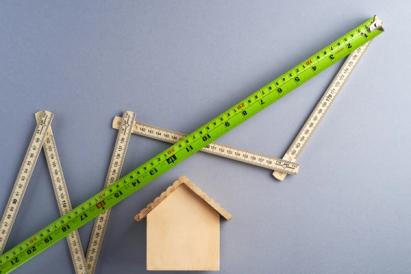9 Essential Tips for Home Loan Shopping
Written by:
Lauren Hargrave
Lauren Hargrave
Personal Finance Writer
Lauren Hargrave is a writer from San Diego who focuses on technology, finance, and healthcare. She worked in finance for seven years before pivoting to a career in writing, and now, instead of putting numbers into spreadsheets, she writes about them instead.
See full bio
Fact Checked by:
Dan Silva
Dan is the Vice President of Marketplace Lending at Own Up. Throughout his career, he has held executive leadership positions in the mortgage and banking industry.
See full bio

Fast Links
- Home Loan Shopping Tip No. 1: Know What You Can Afford
- Home Loan Shopping Tip No. 2: Order Free Credit Reports
- Home Loan Shopping Tip No. 3: Improve Your Credit
- Home Loan Shopping Tip No. 4: Decide Which Loan Type You Want
- Home Loan Shopping Tip No. 5: Decide Whether You Want to Work with a Mortgage Broker
- Home Loan Shopping Tip No. 6: Get Quotes from Multiple Lenders
- Home Loan Shopping Tip 7: Review the Loan Estimates Yourself
- Home Loan Shopping Tip 8: Negotiate Your Mortgage Terms
- Home Loan Shopping Tip 9: Receive Mortgage Pre-approval
- The Bottom Line
Whether you’ve just started casually looking at homes or you’re home shopping in earnest, there’s one thing you should do before you go any further: shop for a home loan. Once you know how much you’re likely to receive in terms of your mortgage, you’ll know the price range of homes you can afford and can narrow your search.
Here are 9 essential tips to help make your home loan shopping experience a success.
Home Loan Shopping Tip No. 1: Know What You Can Afford
Setting a budget for not just your monthly payment, but also the total cost of owning the home, will help to ensure you stay current on your monthly mortgage payments. Costs to consider when setting your budget are:
- Your down payment
- Your monthly mortgage payment
- Other costs affiliated with home ownership, such as property taxes, homeowners insurance, and if applicable, homeowners association fees
- Utilities
- Necessary repairs and maintenance
- Closing costs
You can use our mortgage calculator to get an idea of what you can afford.
Home Loan Shopping Tip No. 2: Order Free Credit Reports
Your credit score is one factor that mortgage lenders consider when determining which home loan you qualify for, how much you have to pay as a down payment, and the interest rate they will charge. The lender will run their own credit check on you, but it can be beneficial to know where your credit score stands before starting the process.
You can receive your free annual credit report at AnnualCreditReport.com. It includes information from all three major credit bureaus.
Once you receive and review your credit report and credit history, you can dispute any errors with the credit bureaus and try to make improvements, if necessary.
Home Loan Shopping Tip No. 3: Improve Your Credit
Unless you have a perfect credit score of 850, there are always ways you can improve your credit. When reviewing your credit report, look for errors that can lower your credit score. These can include: the wrong address, mistakes in your payment history, a line of credit you don’t recognize, etc. To dispute an error on your credit report, you can submit a complaint to the credit bureaus through the Consumer Financial Protection Bureau.
Other ways you can improve your credit include:
- Paying off or paying down any revolving debt like credit card debt (without closing the credit card account)
- Paying your bills on time
- Abstaining from opening any new lines of credit or approving hard credit pulls by prospective creditors.
Home Loan Shopping Tip No. 4: Decide Which Loan Type You Want
Knowing the type of loan you’re seeking will help direct you to the type of mortgage lenders from which you want to request loan estimates. There are four major mortgage options:
1. Conventional loans
2. Federal Housing Administration (FHA) loans
3. USDA loans
4. VA loans
You may also want to see if you qualify for any down payment assistance programs before deciding on a loan.
Conventional Loans
A conventional mortgage can be a fixed-rate mortgage, with an interest rate that stays the same for the entire loan term, or they can be an adjustable-rate mortgage (i.e., ARM loan) that's fixed for a portion of the loan term and then adjusts afterwards depending on market conditions.
You can obtain a conventional loan through financial institutions like banks, credit unions, and mortgage lenders. Credit score and other financial requirements will vary by lender.
FHA Loans
FHA loans are a type of government-backed loan that's guaranteed by the Federal Housing Administration. FHA loans will have varying credit score requirements based on the percentage of down payment that you submit. If you have a minimum credit score of 580, you can submit a down payment that is as little as 3.5% of the sale price. If your credit score is between 500 and 579, you must put at least 10% of the purchase price down. FHA loans have additional required fees like mortgage insurance.
USDA Loans
USDA loans are also a type of government-backed loan that's guaranteed by the United States Department of Agriculture (USDA) and are intended to help home buyers purchase property in eligible rural areas. A USDA loan is a mortgage option if borrowers must meet certain financial requirements and their property must be located within an eligible area.
VA Loans
VA loans are guaranteed by the U.S. Department of Veterans’ Affairs (VA) and are intended for active or retired service members. They generally do not have a down payment requirement. To find out if you qualify for a VA loan, check out this site.
Home Loan Shopping Tip No. 5: Decide Whether You Want to Work with a Mortgage Broker
A mortgage broker is someone who has relationships with mortgage lenders and can help you source loan estimates and manage the mortgage process from loan approval to closing. There are pros and cons to working with a mortgage broker.
Mortgage Broker Pros
- Mortgage brokers typically have access to multiple lenders, so hiring one can save you time in retrieving loan estimates.
- They can help you manage the mortgage process and loan closing process so that it’s more efficient.
Mortgage Broker Cons
- It can be unclear whether you’re getting the best deal, so you should still review the details of each loan estimate yourself.
- You may have to pay the mortgage broker a fee that is in addition to the lender fees and other closing costs. Mortgage brokers typically receive payment based on “points” (i.e. a percentage of the loan amount) at closing, as an addition to the interest rate, or both.
It might make sense to work with a mortgage broker if you’re constrained in terms of time, you have room in your home buying budget to pay the broker’s fees, and you feel that you need hand holding through the mortgage loan process. It might not make sense to pay a broker if your home-buying budget is tight and you feel as though you can manage the home loan shopping process yourself.
Home Loan Shopping Tip No. 6: Get Quotes from Multiple Lenders
To get an accurate comparison, it's a good idea to ask for the same types of mortgage loans, the same loan amount, and loan term (ex. a 30-year mortgage) when requesting quotes from multiple lenders. It’s also a good idea to ask for these loan quotes on the same day so that you’re getting an apples-to-apples comparison. That’s because different components of a loan quote, most importantly mortgage interest rates, can change based on fluctuations in the market. If you ask for your loan quotes on the same day, you’ll be able to compare what the different mortgage lenders are offering based on the same information and market environment.
Home Loan Shopping Tip 7: Review the Loan Estimates Yourself
When comparing loan estimates, there are a variety of factors to consider, and you may not see the whole picture if you don’t review the loan estimates yourself. Pay attention to:
Your Loan Amount
This is the total amount the lender is willing to give you.
Your Interest Rate
Your rate quote is what the lender is charging you to loan the money.
Your Monthly Debt Payment
This is the total amount you will pay each month. It should include the principal payment, the interest payment, and private mortgage insurance premiums (PMI), if applicable. Not every loan estimate will include the PMI in its monthly payment, so if you’re unsure whether yours reflects these premiums, ask the lender.
Depending on how you set up your loan, your monthly payment may also include property taxes and a homeowners insurance premium. Some people are able to wrap these payments into their monthly mortgage payments, while others will pay them separately when they come due. Either way, you should consider your property taxes and homeowners insurance as a cost of owning the home.
Your APR
This is the annual total cost of the loan to you expressed as a percentage. It includes your interest rate in addition to the fees you’ll be charged. So it can be a better gauge of the overall cost of the loan to you than simply the interest rate. Fees that can be included in the APR calculation include: lender fees, discount points, mortgage broker fees, and other origination charges affiliated with the loan.
Other Closing Costs
These can include attorney fees, appraisal fees, etc. Keep in mind that we are talking about a lender estimate and the actual closing costs could be different.
This is an easy way to judge how expensive each loan is in relation to the others. You can use this mortgage shopping worksheet to organize and easily compare your loan quotes.
Home Loan Shopping Tip 8: Negotiate Your Mortgage Terms
Once you’ve compared your loan estimates, you will have a good idea of which are the best mortgage lenders for you. Next, it’s time to negotiate some of the terms those lenders have included. Here are some costs that lenders can typically adjust:
- Your interest rate
- Loan origination fee
- Discount points
- Title services
- Property survey
- Rate lock extension
Home Loan Shopping Tip 9: Receive Mortgage Pre-approval
After you’ve determined your lender of choice and have negotiated the terms of the loan, it’s time to get pre-approved for your mortgage. Getting pre-approved for a home mortgage can have multiple advantages including making your home purchase offer more attractive to sellers and speeding up the timeframe it takes to close on your loan.
To receive mortgage pre-approval, you will need to submit a list of required financial documents to the lender. This can include: proof of income like pay stubs, tax returns, bank statements, and a debt schedule. Once you have received pre-approval, there isn’t usually an expiration date attached to the document. But sellers typically consider a loan pre-approval that’s older than three months to be stale.
The Bottom Line
The home loan shopping process can feel daunting in addition to shopping for a home. But using these tips can help the process go smoother and get you into your home faster.


